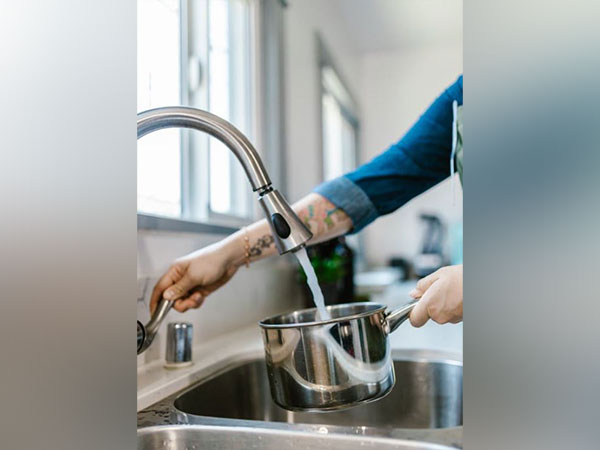
Washington [US], June 19 (ANI): A recent study by Prof. YU Wenzheng’s team highlighted the risk that high concentrations of disinfection byproducts in tap water can cause bladder cancer and suggested sustainable solutions such as ozone biofiltration and nanofiltration to increase the safety of drinking water. This study by researchers from the Research Center for Eco-Environmental Science of the Chinese Academy of Sciences was published in Nature Sustainability.
The provision of safe, reliable drinking water is fundamentally important. Although disinfection is meant to make water safer to drink, byproducts of chlorine-based disinfection are harmful substances that pose a long-term public health risk.
In this study, the researchers conducted a national assessment of tap water across China. They found notable geographical differences in disinfection byproduct concentrations in tap water across China, with higher concentrations in the northeast and the mid-Yangtze River region.
Based on officially published disease data, the researchers then verified the spatial relationship between disinfection byproducts and bladder cancer. That is, regions with a high incidence of bladder cancer are characterized by significantly higher concentrations of disinfection byproducts than other areas.
However, the toxicity of disinfection byproducts is not only determined by their concentration, but also by their composition. Bromine-containing disinfection byproducts are more toxic than those containing chlorine. Coastal regions with seawater intrusion showed higher bromine-containing disinfection byproducts and associated toxicity.
In addition, the concentration of bromine-containing disinfection byproducts is strongly associated with GDP, pollutant discharge, and other human factors. “Therefore, countries and regions experiencing rapid socioeconomic development might be facing higher disinfection byproduct toxicity, and they should consider adopting solutions to address the potential health risk caused by poor drinking water,” said YU Wenzheng, corresponding author of the study.
Advanced water treatment such as ozone biofiltration can effectively remove disinfection byproduct precursors, according to the researchers. In Shanghai, more than 60 per cent of the city’s water plants use such biofiltration to enhance their water treatment, resulting in a much lower disinfection byproduct level than China’s three other largest cities. Therefore, this approach can be used to reduce the risk of disinfection byproducts in economically developed areas.
Sourcing water from less polluted areas may also be a solution, according to the researchers. For example, water supplied to the Haihe River region through the South-to-North Water Diversion Project has not only alleviated the region’s water scarcity, but has also improved water quality in an area that previously suffered from severe organic water pollution.
In addition to proposing altering water sources and enhancing water treatment processes, the researchers also demonstrated that nanofiltration is as an effective household treatment to improve water quality and reduce the health risk of disinfection byproducts. “Nanofiltration is a promising point-of-use technology to guarantee household drinking water safety. Besides disinfection byproducts, other potential microcontaminants in tap water can also be removed by nanofiltration,” said YU.
All in all, rapid urbanization is raising concerns about the impact of various pollutants on drinking water and health. “This is the first attempt to evaluate the health risk of tap water,” said LIU Mengjie, first author of the study. “We are hoping to see more intensive and detailed surveys of disinfection byproducts and other contaminants performed at the national level.”
According to the researchers, high-resolution spatial and temporal data will enable researchers to better reveal the relationship between tap water quality and human health, thus helping to lower tap water risks. (ANI)






